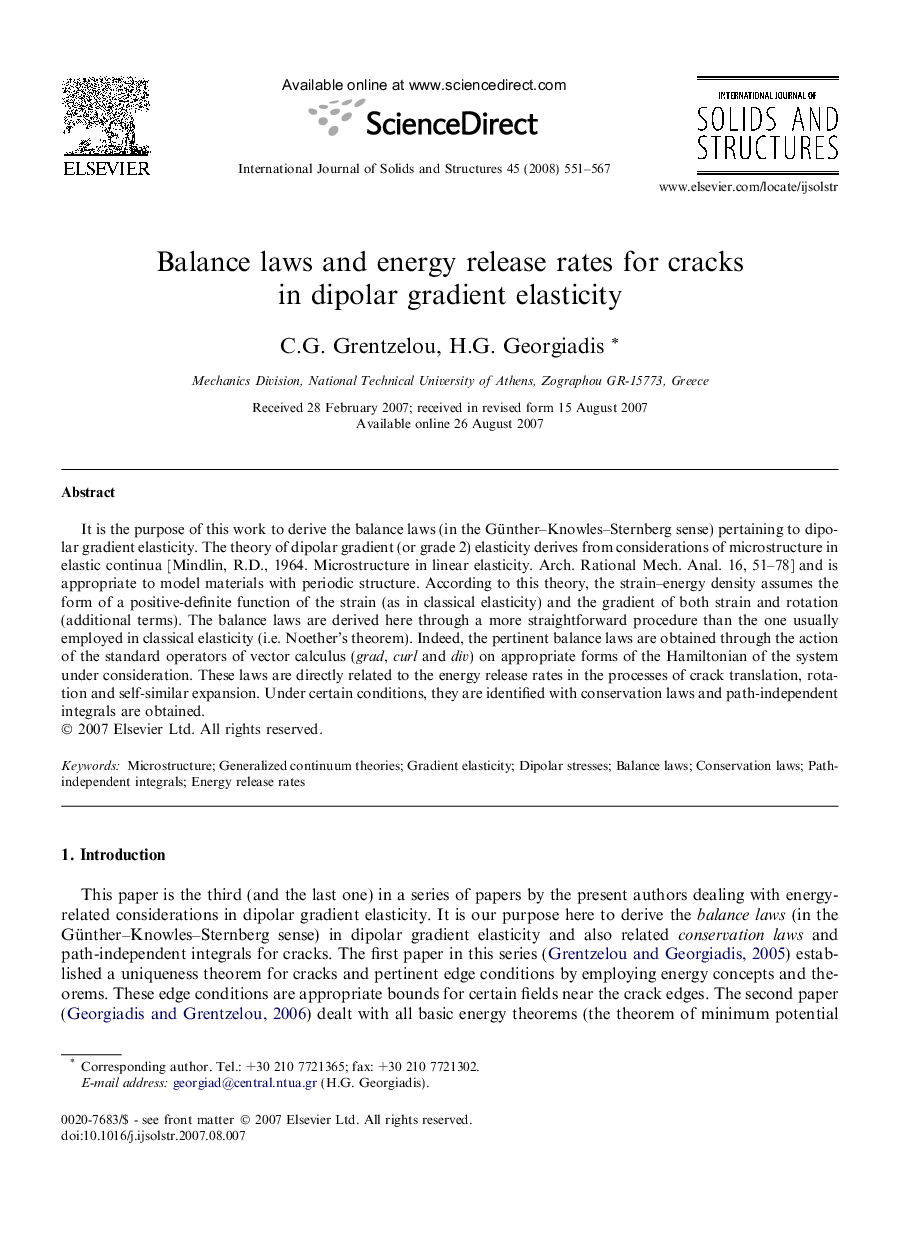| Article ID | Journal | Published Year | Pages | File Type |
|---|---|---|---|---|
| 280146 | International Journal of Solids and Structures | 2008 | 17 Pages |
It is the purpose of this work to derive the balance laws (in the Günther–Knowles–Sternberg sense) pertaining to dipolar gradient elasticity. The theory of dipolar gradient (or grade 2) elasticity derives from considerations of microstructure in elastic continua [Mindlin, R.D., 1964. Microstructure in linear elasticity. Arch. Rational Mech. Anal. 16, 51–78] and is appropriate to model materials with periodic structure. According to this theory, the strain–energy density assumes the form of a positive-definite function of the strain (as in classical elasticity) and the gradient of both strain and rotation (additional terms). The balance laws are derived here through a more straightforward procedure than the one usually employed in classical elasticity (i.e. Noether’s theorem). Indeed, the pertinent balance laws are obtained through the action of the standard operators of vector calculus (grad, curl and div) on appropriate forms of the Hamiltonian of the system under consideration. These laws are directly related to the energy release rates in the processes of crack translation, rotation and self-similar expansion. Under certain conditions, they are identified with conservation laws and path-independent integrals are obtained.
